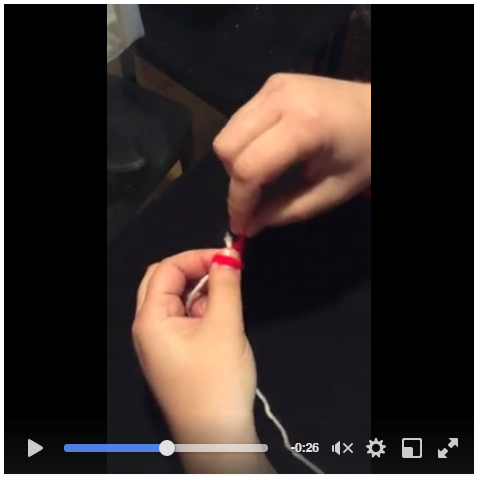
Have you seen the video below making its rounds on social media? (Here's the link.) The promise of doing colorwork and never having to weave in ends seems too good to be true! Multi-colored projects are so pretty, but few of us enjoy weaving in the inevitable ends. I had to check out the technique for myself to see where I thought it would make sense.
One of my most popular designs is a colorwork design. I feel my students’ pain when it comes to weaving in the ends. It’s my MultiGarment design from my Tunisian Crochet class on Craftsy. And one of the most common questions in the class is: “Is there any trick for not having to weave in so many ends?” And I always regret not being able to offer a magic bullet answer. Maybe now I can.
In this design, there really are a lot of color changes where you can’t carry the yarn up a row. This is sad. The downside to this fun and pretty design is that there are so many ends to weave in. It's the downside to any colorwork design. For the Multi Garment, many people are using cotton, silk or bamboo. Both the fiber and the ply of many of these yarns do not lend themselves to using the Russian Join. I'm recommending Cotton Tape to work up this design and it's a woven yarn so the Russian Join is definitely not an option.
Two things are happening in this design that make this knotting technique a good option:
All color changes are happening at the side edges, not in the middle of the design.
The sides are going to be covered with an edging. This means that if I can make sure that the knot is in that edge stitch, it will be covered up once the work is complete. No one will ever know that it’s there.

I started a swatch to see if I could reliably place the knot at the edge stitch every time. I’m happy to show my results. With a little practice, it is totally doable!

Here are my tips for using this knotting technique with the Multi Garment design. The key points to understand are WHEN to do the color change/knot and about how long to cut your yarn. Of course this tip can be generalized to any Tunisian Crochet design where you will be working an edging along the sides:

The best way to learn this technique is to make a small swatch and experiment. Through trial and error you will learn to get accurate placement of your knot.
Nice, huh?

